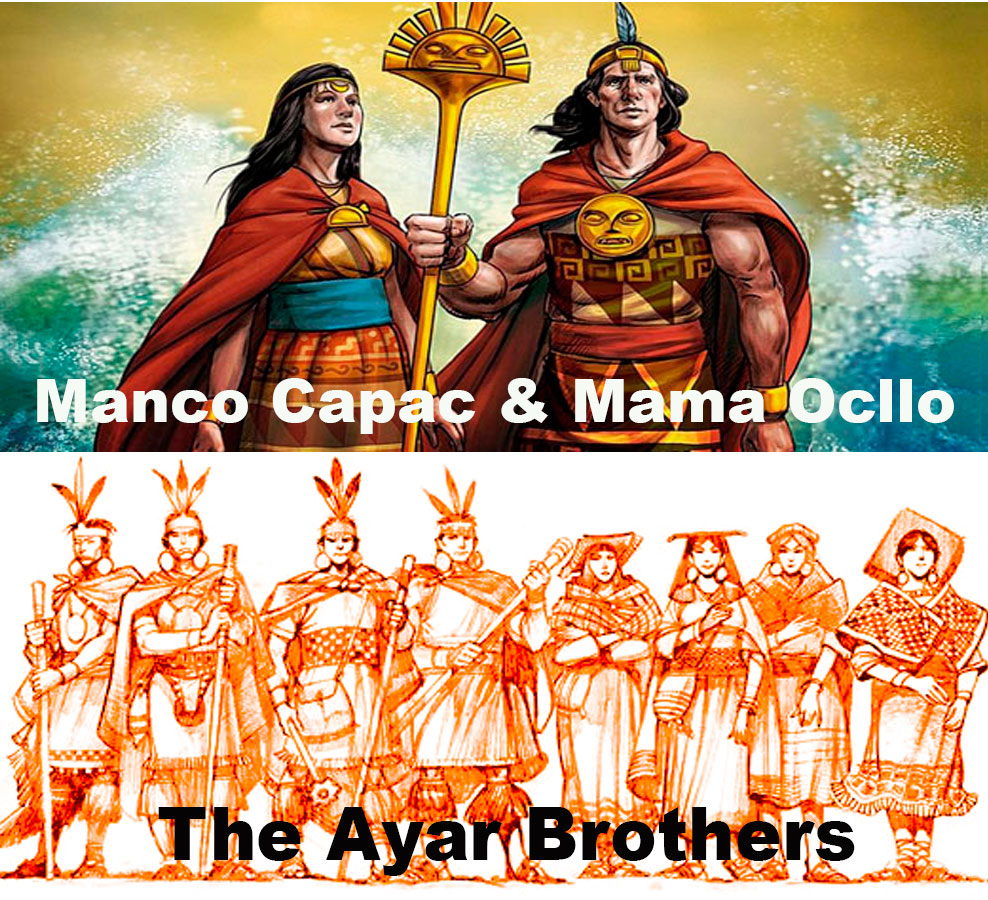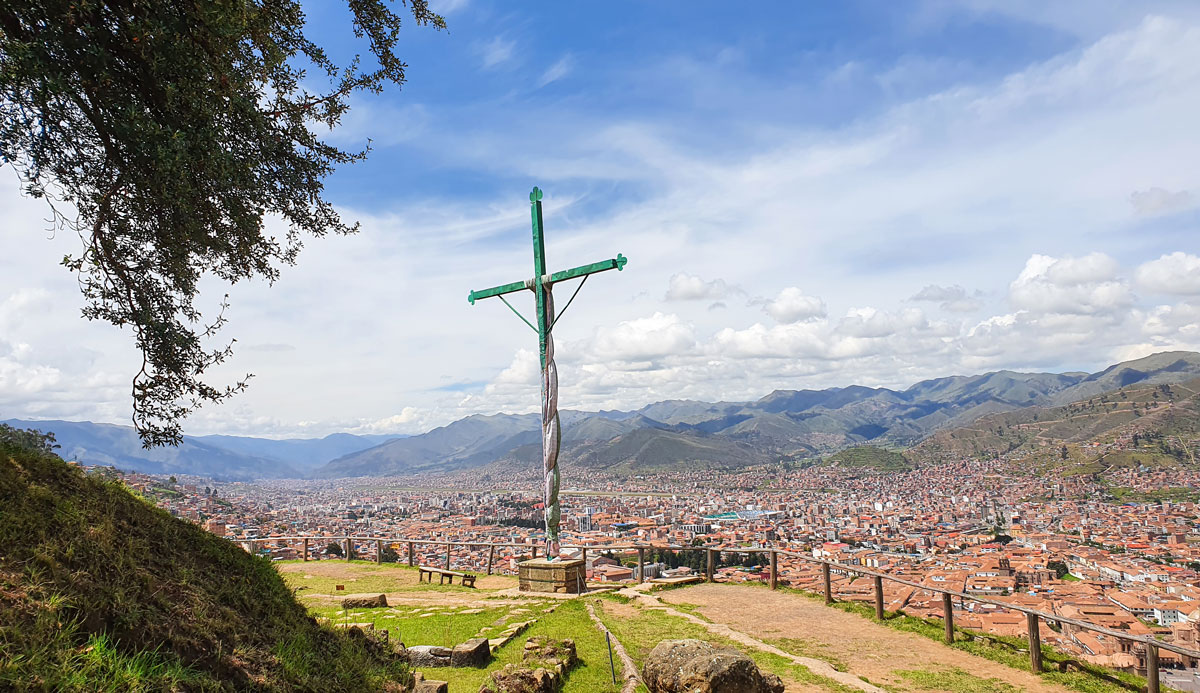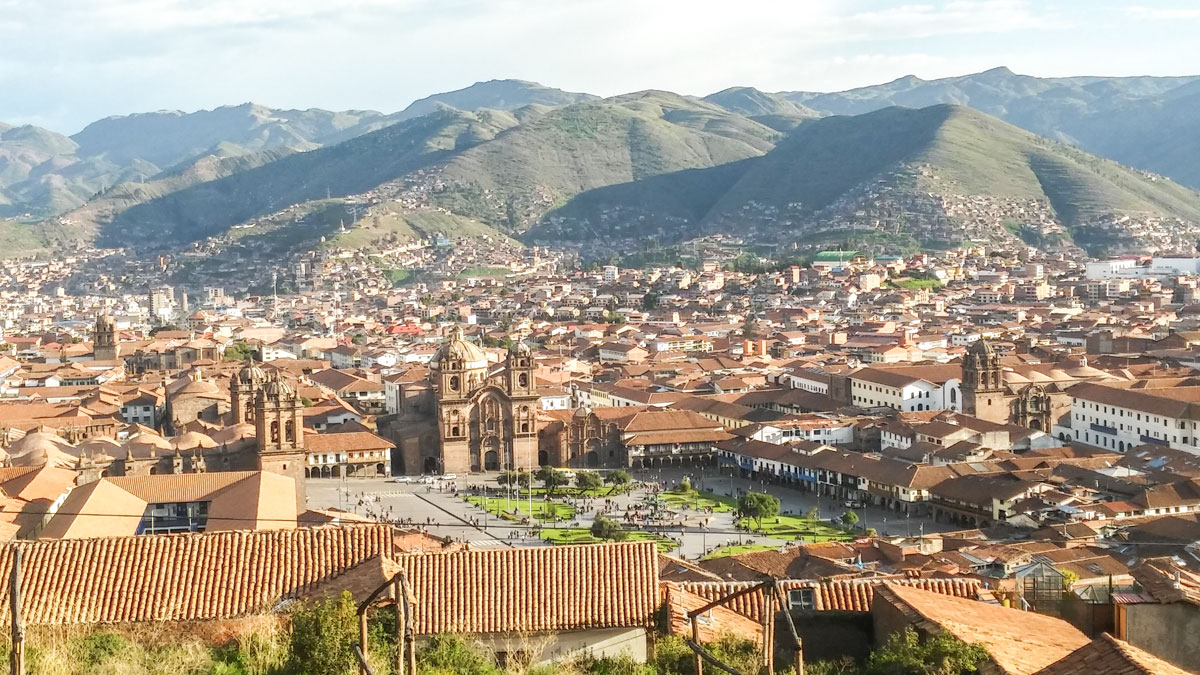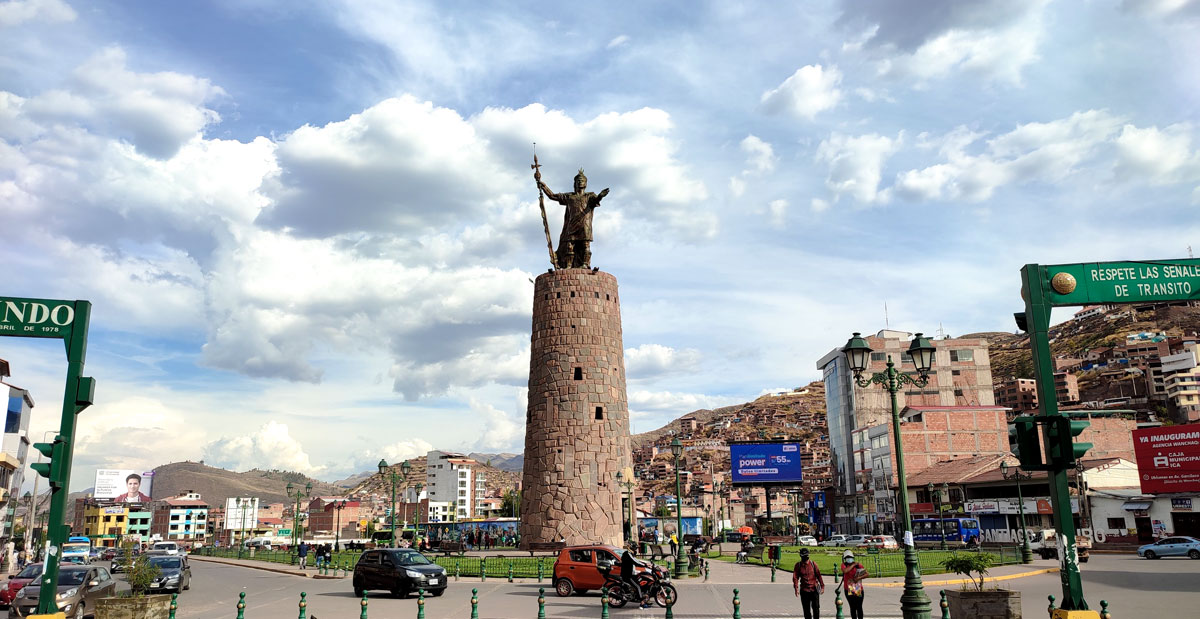
Cusco City is located in southeastern Peru and serves as the historical capital of the Inca Empire. The Department of Cusco is divided into 13 provinces and 112 districts, each offering unique cultural and natural attractions. According to the latest government census, the region has a population of approximately 1 million people.
Among the most visited provinces are Cusco, Urubamba, Calca, and La Convención, known for their breathtaking landscapes and impressive Inca archaeological sites. These regions attract travelers from around the world who come to explore the rich heritage of the Andes.
In the Urubamba Province, visitors can discover some of the region’s most iconic attractions, including:
In the Calca Province, you'll find:
In the Anta Province, adventurers can explore:
While Cuzco and Machu Picchu are obligatory destinations for the first trip to Peru, the country has much more to offer. There is too much to see and do in one trip, so plan you're itinerary according to your interests and the season.
Cusco Peru | |
| Location: | 1105 km. southeast of Lima |
| Altitude: | 3399 m.a.s.l |
| Population: | Approx. 1,316,729 |
| City founding: | 11th century time |
| Time zone: | UTC -5 |
| Geographical Location: | Located at 3,414m in southeastern Peru |
Cusco (also spelled "Cuzco") is pronounced "Cus-ko" in English. While the official and internationally recognized spelling is "Cusco," many people in Lima and other regions of Peru still refer to it as "Cuzco," following the older Spanish spelling. However, in Quechua, the native language of the Andes, the city is called "Qosqo". This was the original name used during the Inca Empire, when Cusco served as the political, spiritual, and cultural center of the vast Tahuantinsuyo. Today, "Qosqo" is still respected and preserved by local communities and appears in cultural and historical references throughout the region.
Legends are already entwined around the origin of Cusco because the later capital of the Incas was only founded around the year 1200 by the first Incas. According to some legends, the first Inca founded the city together with his wife, others speak of four brothers.
Even more interesting is the legend that the first Inca was created by the sun god from the waters of Lake Titicaca. The "first Inca" was Manco Capac and Mama Ocllo, they laid the foundation for what we know today as Cusco.
With a staff in hand, the Inca set out on a journey to find a suitable place for the capital of the Inca Empire - the staff naturally possessed magical powers and was therefore only easy to drive into the fertile soil in Cusco. Originally, the city was built on this site in the shape of a giant puma. This shape is also related to the legend of Lake Titicaca because the lake looks like a hunting puma on satellite images.
The second legend is four brothers and their wives; Ayar Manco and Mama Ocllo, Ayar Cachi and Mama Cora, Ayar Uchu and Mama Rahua, and Ayar Auca and Mama Huaco; who together with ten "ayllus" (Inca organization that groups 10 families) undertook a long journey in search of fertile lands where they could settle.

RELATED STORY:TAHUANTINSUYO INCA EMPIRE
Apart from all these legends about the origin of the Inca Empire, Cusco became the influential capital of the Inca and was continuously expanded after its foundation around 1200. Numerous rulers of the Inca had their seat in Cuzco and expanded their huge empire from there - however, there were also very often conflicts over control and difficulties with attackers.
Over the next 250 years, Cusco continued to develop. Its rulers had the typical terraced fields laid out on which corn and grain was grown, canals were built that supplied the city with fresh water and trade flourished. Cusco was not only the cultural but also the economic center of the Inca Empire until the 11th Inca Huayna Capac took over the Inca Empire in 1493. He moved the "capital" to Quinto - and somehow that was to be the beginning of the end.
In fact, shortly before his death, he divided the kingdom into two parts: the northern one, which he gave to his son Atahualpa and which had its seat in Cajamarca, and to his son Huascar, who kept the south with Cusco. Things didn't go well at all and soon the two brothers were at war to the death.
Several strong earthquakes, most recently in 1950, destroy large parts and many old buildings in Cusco. Today, however, there are still some Inca ruins that still exist, like many colonial buildings in the old town, and are an attractive destination on a city tour. Cusco was declared a World Heritage Site by UNESCO in 1983 and is now of great interest to visitors from all over the world, mainly due to its close proximity to the mysterious Inca city of Machu Picchu.
Today, Cusco is the tourist center of Peru, but it is also one of the most important cities in the country. The city is popular with all types of travelers, such as backpackers, individual travelers, or group travelers. But you also often see language travelers and exchange students here. Cusco is the starting point for tours to Macchu Picchu or the Rainbow Mountain and is easy to reach from Lima.
RELATED STORY: 7 CURIOSITIES OF THE MYSTICAL CITY OF CUSCO
The transformation of Cusco into the focal point of an expanding empire occurred when Pachacuti assumed leadership of the Incas in 1438. Under his guidance, the Inca army seized religious and political control over the surrounding valleys and regions. Simultaneously, Pachacuti orchestrated the development of the imperial Cusco, strategically channeling the Saphi and the Tullumayo rivers that flowed down the valley, thereby shaping the city's center. The city plan of Cusco was conceived in the likeness of a puma, a revered creature: Sacsayhuaman, serving as an essential ritual center and citadel, represented the jagged, tooth-packed head; Pumachupan, the sacred cat’s tail, rested at the confluence of the city’s two rivers; between these pivotal sites lay Q’orikancha, the Temple of the Sun, the reproductive nucleus of the Inca universe, symbolizing the loins of the sacred beast; the heart of the puma manifested as Huacapata, a ceremonial square mirroring both size and location with the present-day Plaza de Armas. Radiating from this square were four primary roads, each leading to a corner of the empire.
The overall accomplishment was extraordinary—a meticulously planned city, unparalleled at the core of a vast empire. In constructing their capital, the Incas adorned Cusco with some of its most magnificent structures. Streets lined with stone palaces and houses ran in straight and narrow patterns, featuring water channels designed to manage the heavy rains. The solid construction of ancient Cusco endures today, particularly evident in the well-preserved stone walls that once adorned palaces and temples.
In 1532, with the arrival of the Spanish in Peru, Cusco stood as a flourishing city, the capital of one of the world's largest empires. The Spaniards were astounded by the city's surpassing beauty, superior stonework exceeding that of Spain, and the abundance of precious metals used in sacred contexts throughout Q’orikancha. Swiftly, they seized the opportunity to plunder its extraordinary wealth. Atahualpa, the reigning emperor, fell into the hands of Spanish conquistadors in Cajamarca while en route to Cusco after bloody battles in the northern extremity of the empire. Learning directly from Emperor Atahualpa about Cusco's immense wealth and its significance as the center of Inca religious and political power, Francisco Pizarro arrived at the native capital on November 15, 1533.
The Spanish city was formally established on March 23, 1534. Cusco was distributed among 88 of Pizarro’s men who chose to settle there. Manco Inca, a blood relative of the murdered Atahualpa, was installed as a puppet ruler, governing from a new palace just below Sacsayhuaman. After Pizarro's departure, Juan and Gonzalo, his sons, emerged victorious in the power struggles, subjecting Manco and his subjects to abuse, ultimately provoking the Incas to resist. In April 1536, Manco fled to Yucay in the Sacred Valley, preparing forces for the Great Rebellion.
Within days, more than 100,000 rebel Inca warriors surrounded the 200 Spanish defenders in Cusco, armed with only eighty horses. On May 6, Manco’s forces laid siege to the city. After a week, a few hundred mounted Spanish soldiers launched a desperate counterattack on the Inca stronghold in Sacsayhuaman and, astonishingly, defeated the native forces, putting approximately 1500 warriors to the sword as they claimed victory.
Although Spanish-controlled Cusco never faced such a serious threat from its indigenous population again, its battles persisted. By the end of the following year's rains, a rival conquistador, Almagro, seized Cusco until Francisco Pizarro defeated the rebel Spanish troops months later, executing Almagro in the main plaza. Concurrently, a resilient group of rebel Incas held out in Vilcabamba until 1572, when the Spanish colonial viceroy, Toledo, captured the leader Tupac Amaru and beheaded him in the Plaza de Armas.
The ancient Inca Capital is said to have been founded around AD 1100, and since then has developed into a major commercial and tourism center of 1,316,729 inhabitants most of whom are Quechua. The city council has designated Qosqo (Cuzco in Quechua) as the official spelling.

Today colonial churches, monasteries, convents, and extensive pre-Colombian, ruins are interspersed with countless hotels, bars restaurants that cater to hundreds of thousands of visitors. Almost every central street has remains of Inca walls, arches and doorways; the perfect Inca stonework now serves as the foundation for more modern dwellings. This stonework is tapered upwards (battered): every wall has a perfect line of inclination toward the center, from bottom to top. The curved stonework of the Temple of the Sun, for example, is probably unequaled in the world.
Cuzco is considered one of the most ancient cities on the continent. The name Qosqo in Quechua means "The earth's navel".
There are many myths about the creation of the city. However, it is known that the city existed before the Inca Empire (5000 BC).
The Spanish foundation of the city took place in 1534. Later it was the seat of the first Bishop of South America and the center of great cultural activity. Cuzco had one of the most outstanding art schools of the world: the Escuela Cusqueña. The basic characteristic of the city is its perfect blend of the urban with the pre-Colombian monuments. Among the most outstanding places, is the Coricancha temple, which is located near the Main Square. This was the center of the cult to the Sun God or Inti. On top of this temple. the Spanish built the Santo Domingo Convent. The Compañia de Jesus is considered the most beautiful churches of the continent.

The Cathedral and La Merced Churches are some of the Spanish legacy. Walking along the streets of the city. there are wonderful things to visit as the craftsmen village known as San Blas. Its temple is a magnificent piece of colonial art. In and out of Cuzco there are great things to see. For example, in the center of the city are the Sacsayhuaman ruins or the complex of Ollantaytambo and the towns of Pisac and Calca. And of course Machu Picchu, an awe-inspiring city. There are also religious festivities that you can enjoy such as the Procession of the Corpus Christi or the Inti Raymi. Come to Cuzco. Nothing you have ever done is even close to a visit to Cusco.
Cusco is considered the tourism mecca of Peru. More than one million travelers—both international and local—arrive in Cusco each year. This destination is featured in nearly every travel guide as one of the best cities to visit before you die. National Geographic included Cusco among the safest places to travel in the article “Just Back: Cusco, Peru”
TripAdvisor has also listed Cusco as a must-visit destination in its Best of the Best category. Many tourism companies and guidebooks strongly recommend exploring this incredible city.
Why visit Cusco? This is a question many travelers ask when they plan a trip to Peru.
Cusco is known for its rich culture, ancient traditions, stunning natural beauty, and diverse landscapes. But the real reason to visit Cusco is to discover the most breathtaking places left behind by our ancestors.
The capital of the Inca Empire offers a wide range of experiences—nature, trekking, and cultural activities rooted in Inca heritage. The most popular routes today include Choquequirao and Machu Picchu. However, these are not the only places worth visiting in the region. There are many other destinations in and around Cusco where you can immerse yourself in Inca and colonial history.
You don’t need to travel far to see impressive Inca and colonial architecture. In fact, simply walking through the streets of Cusco will reveal centuries of history, with every corner offering a glimpse into the past.
If you’ve never been to Cusco, we highly recommend packing your suitcase and coming to explore the unimaginable.
Discover more about the Inca culture and experience the magic of Cusco for yourself.
RELATED STORY:THINGS TO DO IN CUSCO
Cusco Sights | ||
| San Francisco Church | ||
| Sacsayhuaman | Corpus Christi Cusco | Andahuaylillas Church |
| Chinchero | Cusco Museum Regional | Q'uenqo |
| Pukapukara | Tambomachay | Tipon |
RELATED:TREKKING IN CUSCO
Cusco: Top Tourist Attractions | ||
| Machu Picchu | Inca Trail | Salkantay |
| Choquequirao | Vilcabamba | Rainbow Mountain |
| Quillabamba | Chinchero | Ausangate |
| Palcoyo Mountain | Pallay Poncho | Moray |
| Ollantaytambo | Pisac | Paucartambo |
